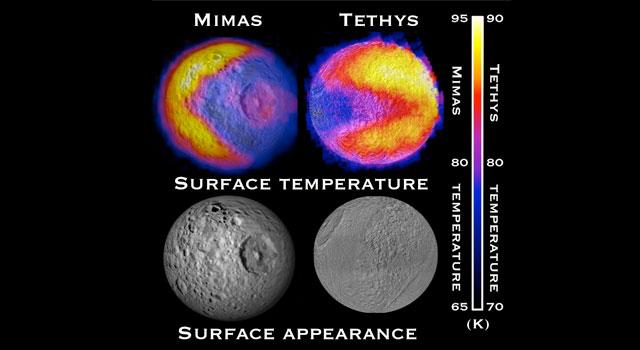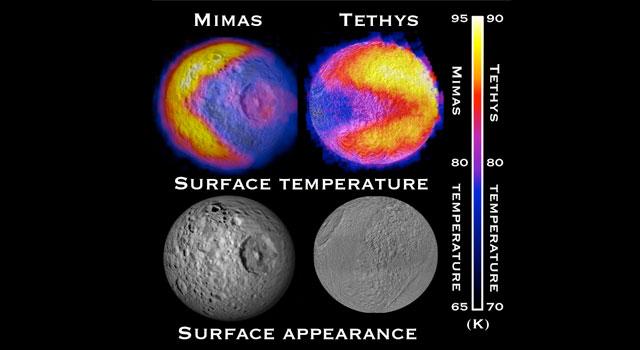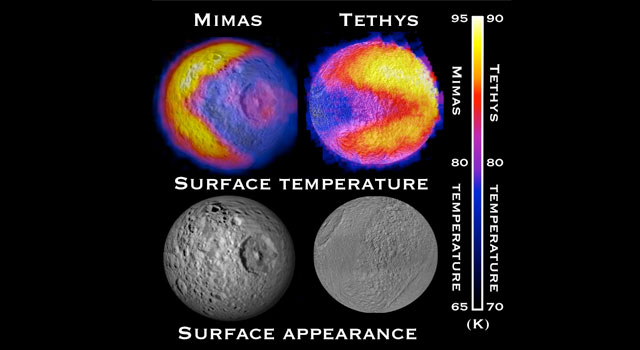NASA’s Cassini has revealed another pattern that looks like Pac-Man on an icy Saturnian moon, this time Tethys.
The first one was discovered on Mimas in 2010. The 1980s video-game icon outlines warmer areas in thermal data collected by Cassini’s composite infrared spectrometer.
“Finding a second Pac-Man in the Saturn system tells us that the processes creating these Pac-Men are more widespread than previously thought,” said study lead author Carly Howett at Southwest Research Institute in a press release.
“The Saturn system—and even the Jupiter system—could turn out to be a veritable arcade of these characters.”
The feature occurs when high-energy electrons strike the forward-facing side of Tethys as it orbits Saturn, transforming its soft surface into dense ice. This makes it heat up or cool down more slowly compared to the rest of its surface.
“Studies at infrared wavelengths give us a tremendous amount of information about the processes that shape planets and moons,” said Mike Flasar at NASA’s Goddard Space Flight Center in the release.
“A result like this underscores just how powerful these observations are.”
However, unlike Mimas, Tethys gets coated by ice plumes from the larger moon Enceladus, suggesting the surface changes from electrons happen faster than the recoating.
“Finding a new Pac-Man demonstrates the diversity of processes at work in the Saturn system,” said Linda Spilker, Cassini project scientist at NASA’s Jet Propulsion Laboratory, in the release.
“Future Cassini observations may reveal other new phenomena that will surprise us and help us better understand the evolution of moons in the Saturn system and beyond.”
The findings were published online in the journal Icarus.
The Epoch Times publishes in 35 countries and in 19 languages. Subscribe to our e-newsletter.





